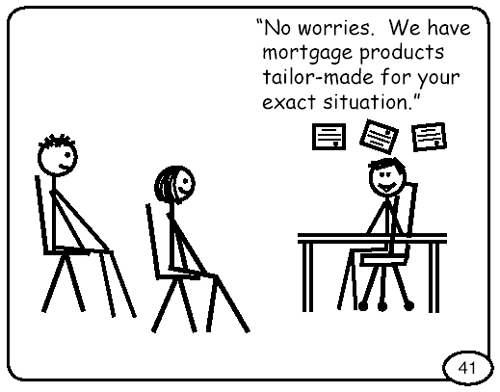What Caused the Mortgage Crisis
Post on: 17 Июль, 2015 No Comment

What Caused the Mortgage Crisis?
In 2007, the US economy entered a mortgage crisis that caused panic and financial turmoil around the world. The mortgage crisis was a result of too much borrowing and flawed financial modeling, largely based on the assumption that home prices only go up. Greed and fraud also played important parts. Let’s review how the mortgage crisis unfolded.
The American Dream
Owning a home is part of the ‘American Dream ‘. It allows people to take pride in a property and engage in a community for the long term. However, homes are expensive and most people need to borrow money to get one.
The conditions were right for people to achieve that dream. In the early 2000s, mortgage interest rates were low, which allow you to borrow more money with a lower monthly payment. In addition, home prices increased dramatically, so buying a home seemed like a sure bet. Lenders understood that homes make good collateral. so they were willing to participate.
The mortgage crisis was triggered as this situation built momentum.
Cash Out
With home prices skyrocketing, homeowners found enormous wealth in their homes. They had plenty of equity, so why let it sit in the house? Homeowners refinanced and took second mortgages to get cash out of their homes’ equity. Some of this money was spent wisely, and some simply maintained a standard of living while wages stayed stagnant.
Easy Money Before the Mortgage Crisis
Banks offered easy access to money before the mortgage crisis emerged. Borrowers got into high risk mortgages such as option-ARMs. and they qualified for mortgages with little or no documentation. Even people with bad credit could qualify as subprime borrowers.
- What is Credit?
- High Risk Mortgages
- Low Documentation Loans
Fraud on the part of homebuyers and mortgage brokers helped make the mortgage crisis more serious. Mortgage applications were not checked for accuracy as well as they should have been. As long as the party never ended, everything was fine.
Sloshing Liquidity
Where did all that lending money come from? There was a glut of liquidity sloshing around the world — which quickly dried up at the height of the mortgage crisis. People, businesses, and governments had money to invest, and they developed an appetite for mortgage linked investments as a way to earn more in a low interest rate environment.
Banks used to keep mortgages on their books. If you borrowed money from Bank A, you’d make repayments to Bank A, and they’d lose money if you defaulted. However, banks now sell your loan, and it may be further divided and sold to numerous investors. These investments are extremely complex, so many investors just rely on rating agencies to tell them how safe the investments are (without really understanding them).
Early Stages of Crisis
Unfortunately, the chickens came home to roost and the mortgage crisis began. Home prices stopped going up at a breakneck speed. Borrowers who bought more home than they could afford stopped paying the mortgage. Monthly payments increased on adjustable rate mortgages as interest rates rose.
As homeowners discovered that they could not afford their homes, they were left with few choices. They could wait for the bank to foreclose, they could renegotiate their loan in a workout program, or they could just walk away from the home. Of course, many also tried to increase income and decrease spending but they were already on thin ice.
- Mortgage Workout Programs
- Some Walk Away From Homes in Mortgage Crisis
Traditionally, banks could recover the amount they loaned at foreclosure. However, home values fell to such an extent that banks increasingly took hefty losses on defaulted loans.
The Plot Thickens
Once people started defaulting on loans in record numbers (and once the word got around that things were bad), the mortgage crisis really heated up. Banks and investors began losing money. Financial institutions decided to reduce their exposure to risk very quickly, and banks hesitated to lend to each other because they didn’t know if they’d ever get paid back. Of course, banks and businesses need money to flow in order to operate.
With bank weakness came bank failures. The FDIC ramped up staff in preparation for hundreds of bank failures caused by the mortgage crisis, and some mainstays of the banking world went under. The general public saw these high-profile institutions failing and panic increased. In a historic event, we were reminded that money market funds can ‘break the buck’.
- How FDIC Insurance Works
- What Happens in a Bank Failure?
- Money Market Funds vs Money Market Accounts
Other factors contributed to the severity of the mortgage crisis. The US economy softened, and higher commodity prices hurt consumers and businesses. Other complex financial products started to unravel.
Effects of the Mortgage Crisis
Lawmakers, consumers, bankers, and businesspeople scurried to reduce the effects of the mortgage crisis. It set off a dramatic chain of events, and will continue to unfold for years to come. The public got to see ‘how the sausage is made’ and was shocked to learn how leveraged the world is. About.com has more on recent developments and economic recovery. For further information, see:
Audio resources for understanding the mortgage crisis:














